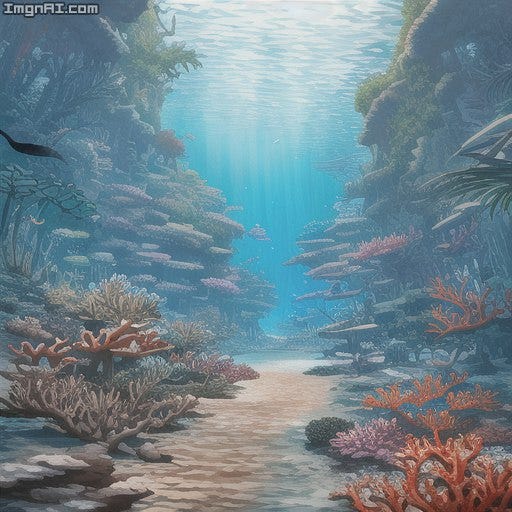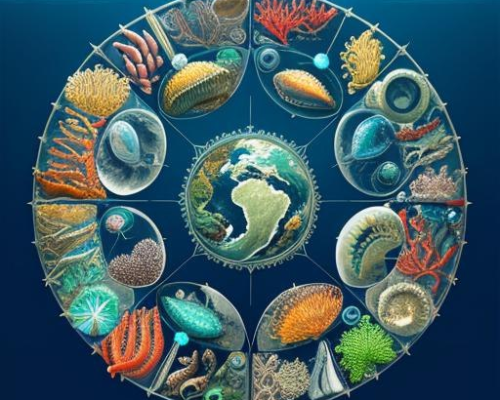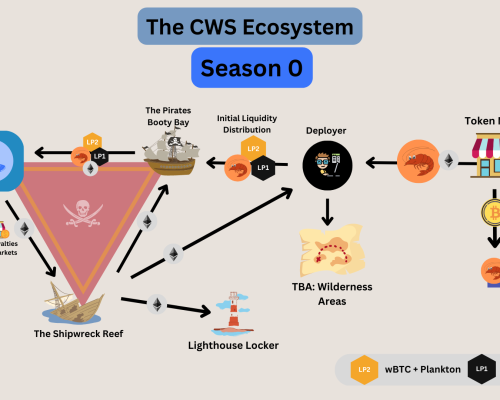
Coral reefs offer a range of ecological services, including supporting biodiversity, providing habitat, and regulating nutrient cycles. They are home to approximately 25% of all marine species, making them one of the most biodiverse ecosystems on the planet. Coral reefs are also essential nursery habitats for many commercially important fish species, such as snappers and groupers. These fish species rely on the coral reefs for food, shelter, and reproduction. Coral reefs also protect shorelines from storms and erosion, which is particularly important for low-lying island nations. Without coral reefs, these nations would be more vulnerable to the impacts of climate change and sea-level rise.
In addition to their ecological services, coral reefs are a significant economic resource for many coastal communities. Fisheries, tourism, and recreation all depend on the health of coral reefs. In some regions, coral reef tourism generates millions of dollars in revenue each year. People are drawn to coral reefs for their beauty, biodiversity, and recreational opportunities. Snorkeling, diving, and fishing are all popular activities that take place on coral reefs.
Coral reefs are complex and dynamic ecosystems that comprise many different organisms. The structure of a coral reef is created by the calcium carbonate skeletons of coral polyps, which form a framework for other organisms to attach and grow. Coral reefs grow slowly, with some species growing just a few millimeters per year. However, given enough time, coral reefs can become enormous structures, with some coral formations extending for hundreds of kilometers.
Coral polyps have a symbiotic relationship with tiny photosynthetic organisms called zooxanthellae, which live inside the polyps. The zooxanthellae provide the coral with food and oxygen through photosynthesis, while the coral provides the zooxanthellae with shelter and nutrients. This relationship is crucial for the survival and growth of coral reefs. Coral bleaching occurs when the zooxanthellae leave the coral polyps, causing the coral to turn white and eventually die. Coral bleaching is caused by a range of factors, including changes in temperature, light, and water quality.
Coral reefs face a range of threats from human activities, including climate change, overfishing, and pollution. Climate change has caused ocean temperatures to rise and oceans to become more acidic, which can damage and kill coral polyps. Overfishing can also have a significant impact on coral reefs, as it disrupts the delicate balance of the ecosystem. Pollution, particularly from coastal development and agricultural runoff, can also harm coral reefs. The increased sedimentation and nutrient runoff from coastal development can smother corals, while agricultural runoff can cause algal blooms that can harm the delicate ecosystem.

The degradation of coral reefs has serious consequences for the environment and the economy. The loss of coral reefs can lead to a decline in fish populations, which can have far-reaching effects on the food chain. Additionally, the loss of coral reefs can have significant economic impacts, particularly in regions where tourism and fisheries are the primary sources of income. The loss of coral reefs can also lead to the loss of coastal protection, which can increase the vulnerability of communities to natural disasters.
Coral reefs and mangroves are two interconnected marine ecosystems. Mangroves are a type of tree that grows in coastal areas and provides an essential nursery habitat for many reef fish species. The roots of mangroves also help to stabilize coastal areas, preventing erosion and protecting against storm surges. In turn, coral reefs provide a protective barrier for mangroves and can help to mitigate the impacts of storms and waves. However, both coral reefs and mangroves face significant threats from human activities, particularly coastal development and deforestation. The loss of mangroves can lead to increased sedimentation and nutrient runoff, which can harm nearby coral reefs.
Coral reefs are not only important for their ecological and economic value but also for their cultural significance. Coral reefs have been an integral part of the cultural heritage of many coastal communities for centuries. They have been used for food, medicine, and building materials and have been the subject of art and storytelling. The loss of coral reefs can have a profound impact on the cultural identity of these communities.
Coral reefs are also essential for global food security. Many countries rely on fish caught from coral reefs as a primary source of protein. In some areas, the loss of coral reefs has led to food shortages and malnutrition. In addition, coral reefs play a critical role in the global food chain. The decline in fish populations due to the loss of coral reefs can have far-reaching effects on other marine species and ultimately impact human food sources.
Coral reefs are also critical in the fight against climate change. They act as carbon sinks, absorbing and storing large amounts of carbon dioxide from the atmosphere. In fact, coral reefs can store more carbon per unit area than most terrestrial forests. The loss of coral reefs, therefore, not only impacts marine ecosystems but contributes to the global climate crisis.
The conservation efforts being made to protect coral reefs are diverse and include a range of strategies such as marine protected areas, coral gardening, and reducing pollution. Marine protected areas are designated areas of the ocean where human activity is restricted, allowing marine life to thrive. Coral gardening involves growing coral fragments in nurseries and transplanting them onto damaged reefs. Reducing pollution from coastal development and agriculture can also help protect coral reefs. It is crucial that we protect and preserve these delicate ecosystems since they are truly the lifeblood of the ocean.

In conclusion, coral reefs are a vital and irreplaceable part of our ocean’s ecosystem. They provide homes and shelter for countless marine species, play a key role in nutrient cycling and maintaining the health of the ocean, and have intricate symbiotic relationships with other organisms. It is up to us to protect and preserve these delicate ecosystems since they are truly the lifeblood of the ocean.
As awareness continues to grow about the importance of coral reefs, more and more people are taking action to protect them. Governments and organizations around the world are implementing policies and initiatives to reduce the impact of human activities on coral reefs. There are also many grassroots efforts by local communities to protect coral reefs, such as beach cleanups and coral restoration projects.
However, there is still much work to be done to protect coral reefs from the threats they face. Climate change, overfishing, and pollution continue to pose significant risks to coral reefs, and the degradation of these ecosystems has serious consequences for the environment and the economy. It is crucial that we continue to raise awareness about the importance of coral reefs and take action to protect them.
In addition to conservation efforts, research is also critical to understanding and protecting coral reefs. Scientists are studying the biology and ecology of coral reefs to better understand how they function and how they are impacted by human activities. This research can inform conservation efforts and help us develop more effective strategies for protecting coral reefs.
Overall, coral reefs are essential to the health of our oceans and the global ecosystem. They provide vital habitats for marine life, protect shorelines from storms and erosion, and play a critical role in global food security. As threats to coral reefs continue to mount, it is up to all of us to take action to protect and preserve these delicate ecosystems for future generations.

CWS is an experimental nft crypto defi game project built around the concept of marine ecosystems. CWS aims to create a sustainable and community-driven ecosystem for its users. The project allows active users to earn token rewards through token staking, NFT ownership, and more.
DISCLAIMER: This paper and the information contained within it were generated by an Artificial Intelligence (AI) model, and as such, may contain inaccuracies or be incorrect. It is the reader’s responsibility to conduct their own research and make their own decisions based on the information presented. The information contained in this paper should not be construed as financial advice. The authors and/or publishers of this paper assume no responsibility for any errors or omissions and shall not be held liable for any loss or damage of any kind arising from the use of the information contained within. The reader assumes full responsibility for any actions they take based on the information contained in this paper. This paper is provided for educational and informational purposes only and is not intended to be investment advice. Please be aware that the use of AI technology may result in unexpected outcomes. The authors and/or publishers of this paper make no representations or warranties of any kind, express or implied, about the completeness, accuracy, reliability, suitability or availability with respect to the information, products, services, or related graphics contained in this paper for any purpose. Any reliance placed on such information is strictly at your own risk.


